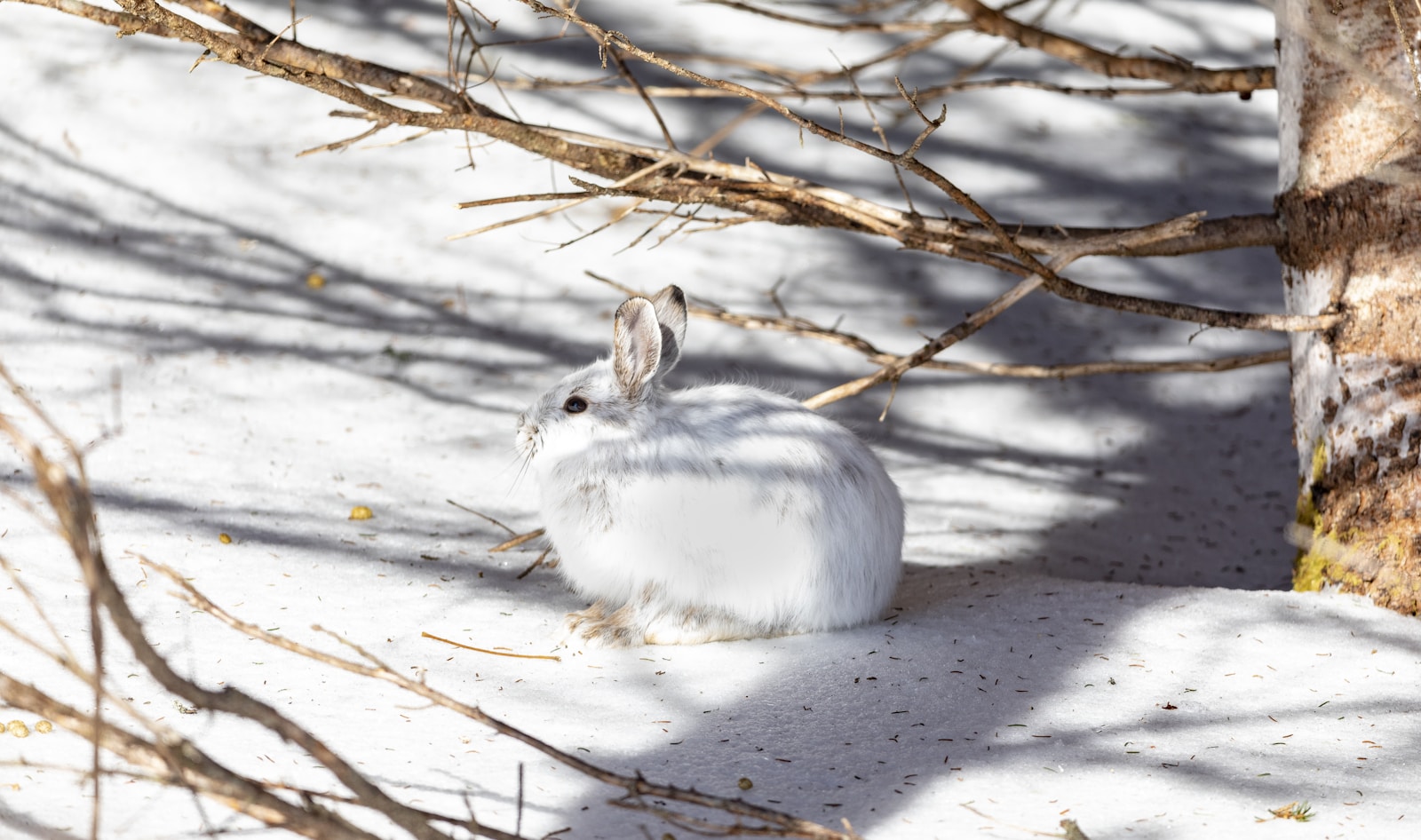The rural life on an acreage in Alberta foothills gives us all sorts of stories to watch unfold. Buying a property near Water Valley has made me realize how much life there is in our forests, a short distance from Calgary to the west but giving a very different experience living on an Alberta farm
A Story of the Snowshoe Hare
The foothills blanketed in deep winter snow, their rolling slopes softened by drifts and shadowed by towering spruce and aspen. Among the quiet trees, a lone snowshoe hare sat motionless, blending perfectly into the frost-covered world around it.
A young hare barely a year old, but already a survivor. Oversized hind feet, thickly furred for warmth and traction, made her a master of movement in the deep snow. These feet—her namesake—acted like natural snowshoes, allowing her to bound effortlessly while larger predators struggled in the powder.
Life in the Wild: Diet and Predators
Despite her agility, the world was fraught with danger. Snowshoe hares are a staple prey species in the foothills, a critical link in the food web. Lynx, foxes, coyotes, owls, hawks, and even weasels hunted her kind relentlessly.
She knew to move at dusk and dawn, the twilight hours offering just enough shadow for concealment. Her large eyes, set wide apart, gave her an incredible field of vision, detecting even the slightest movement from a stalking predator. But she also had to eat.
Unlike some animals that hibernate, snowshoe hares remain active all winter, surviving on twigs, bark, and buds. Favoring aspen and willow twigs, gnawing them down with her sharp teeth, but she would also nibble on pine needles when food was scarce. In the summer, she would feast on grasses, clover, wildflowers, and leaves, taking in as much nutrition as possible before winter returned.
Masters of Camouflage
Her coat had turned from a rusty brown to pure white with the first frost, a built-in seasonal adaptation that helped her vanish into the snow. But this change wasn’t instant—the transformation took weeks, triggered by the changing light rather than the temperature. If snow arrived late, hares could find themselves dangerously exposed, white against the dull brown of autumn leaves.
A Cycle of Boom and Bust
This hare wasn’t alone. Snowshoe hares are prolific breeders, with females giving birth to up to four litters a year, each containing three to eight babies (called leverets). Unlike rabbits, newborn hares are born fully furred, eyes open, and ready to hop within hours.
Her own mother had raised three litters that year, and the foothills teemed with hares. But with every boom in population came a matching rise in predators. The snowshoe hare population follows a 10-year cycle, peaking and crashing as food and predator numbers fluctuate. Lynx, in particular, mirror this cycle, thriving when hares are plentiful and struggling when they decline.
The Race for Survival
One evening, as she nibbled on a branch, a shadow passed overhead. An owl, silent and swift, dove toward her. In an instant, she bolted, her powerful legs launching her in zig-zagging bounds. The owl adjusted, talons extended—
But the hare had one last trick. With a mighty leap, she buried herself into a snowdrift, tunneling deep with her powerful feet. The owl, now without a target, flapped back up into the trees. Whisper lay still, heart hammering, safe once again.
This was the way of the foothills—endless cycles of hunt and escape, of snow and thaw, of survival against the odds. And as long as the forests remained, the silent runners of winter would endure.
Fun Facts About Snowshoe Hares
They are not true rabbits. Snowshoe hares are in the hare family, meaning their babies are born fully developed and mobile.
Their fur changes color. In winter, they are pure white, but in summer, they turn a mottled brown to blend in with the forest floor.
They have extra-large feet. This adaptation allows them to move on top of deep snow with ease.
Their population follows a 10-year cycle. This natural boom-and-bust rhythm influences predator numbers as well.
They can reach speeds of up to 45 km/h (28 mph). Their powerful legs let them escape danger with impressive bursts of speed.
They are crepuscular. This means they are most active at dawn and dusk when they are less visible to predators.
Would you like to hear more about other animals in the Alberta foothills?



